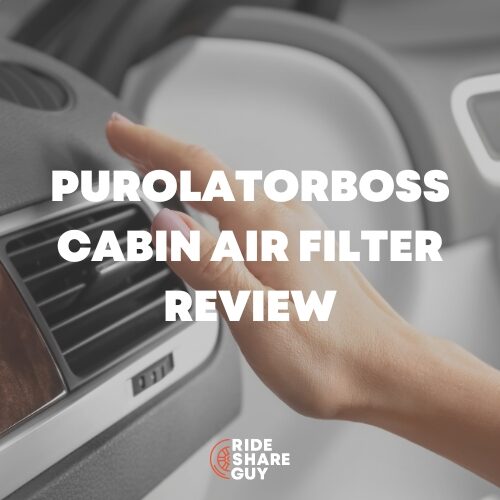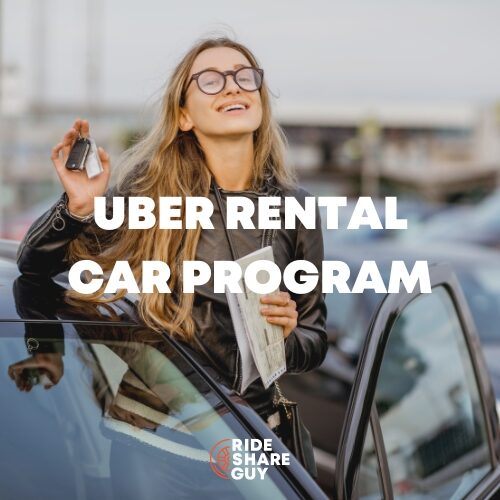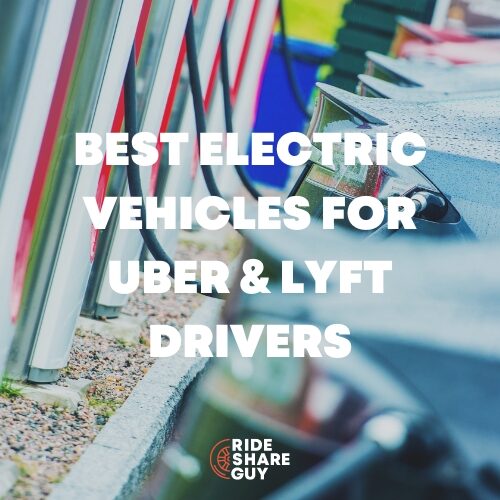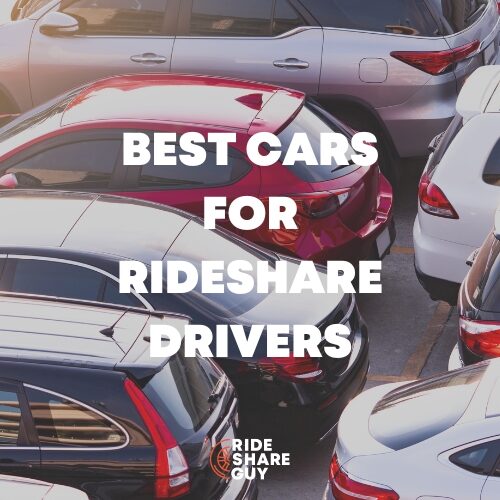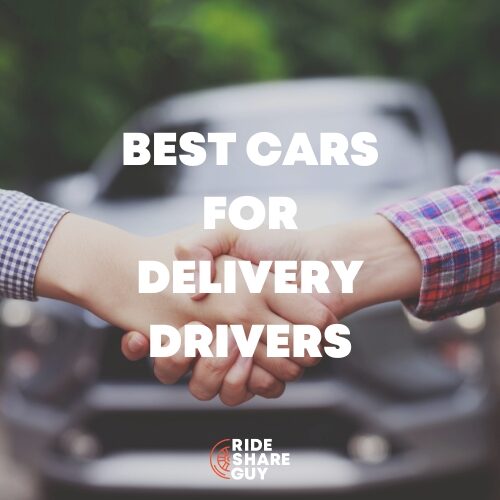What happens when you buy the rideshare car of your dreams…but then it appreciates, and you want the equity out of it? Senior EV Expert Gabe Ets-Hokin shares why he decided to sell his Tesla Model 3, plus what he’s driving now.
It seems like much of what I’ve done here at RSG is try to find the absolute best vehicle for rideshare or gig work. I’ve even written a story about designing my own.
I think the best car for rideshare should be practical and simple, cheap to operate and entertaining to drive. And then I got an opportunity to buy a Tesla Model 3… then, a short time later, I sold it. Why?
Do you use an EV to drive for rideshare or delivery? Join our Facebook Group for EV gig drivers for discussions about the current state and future of EVs.
Quick summary:
- Yes, I sold my Tesla – and I MADE money!
- Right now, the market for used Teslas is hot – but it won’t be this way forever
- What to replace it with? You’ll never guess…
- Looking for cheaper EVs? Check out our list of the cheapest EVs
What’s a Tesla?
If you don’t know what a Tesla is, you haven’t paid your WiFi bill since 2013. It’s the hottest, most talked-about electric vehicle (EV) on Earth and is practically synonymous with “EV,” like Kleenex for facial tissue or Vespa for scooters.
The first Tesla was a two-seat Roadster, followed by the Model S and X luxury cars, but the world really oohed and aahed when the Model 3 came out in 2018; at $35,000 it was half the price of the S and X and offered similar range and performance. Sleek, fast, sexy with entry-level luxury car chops, it was my object of desire.
But I wasn’t alone: Tesla did very well with the 3 and its crossover sister the Y: well over two million of these cars have been cranked out in four years, amazing for such a new company.
Can’t get enough Tesla content? Read all of our Tesla-related coverage here:
- Uberin’ with a Tesla Model 3
- Taking a Tesla as a passenger
- What it’s like renting a Tesla to drive for Uber through Hertz
- Cost analysis of renting a Tesla through Hertz to drive for Uber
Why Did I Get One?
I never thought I’d have one—I don’t think a luxury car was a good choice for my earnings strategy. I’ve always gone for incentive programs like Quest or Lyft Challenge, so getting a high quantity of rides was more important than high-paying rides, so when I bought an EV, I chose the homely but affordable and dependable Chevy Bolt.
All went well for about 80,000 trouble-free miles: nothing but a few software-related recalls, tire rotations, washer fluid, and once I sent $8 to Jeff Bezos for a new cabin air filter. I was saving about $150 a month on gas, the passengers loved it, and all was good. And then the pandemic.
The pandemic was like one of those dunk tanks you rent to raise money at a church bazaar, except everyone I knew was inside it, and COVID-19 was throwing the baseballs. We all plunged into a world gone fun house-crazy.
Within a few weeks of the first reported case, it was lockdown time, and my wife, who was in a high-risk group, asked me to stop driving. Since I was covered by California’s unemployment law, I parked the Bolt (except for writing stories about safety partitions and masks).
…Just in time for a recall notice! Seems the darn things were (in small numbers, less than 20 overall) just bursting into flames at inopportune times. I can’t recall (har, har) what GM told me, but the general idea was to not only not charge over 80 percent and not let the estimated miles remaining dip below 70, but do not park within 50 feet of another car or structure, which meant that I had to move to Greenland to safely own my car until GM reinstalled 140,000 new batteries. It could take years! As the kids are saying, “Nope.”
Long story short: after many Outraged Middle-Aged White Man phone calls to GM’s “customer experience” team, I got about $40,000 in a buyback offer. That was the price of a Tesla Model 3 Rear-Wheel Drive in the summer of 2021, so placing an order was a no-brainer.
In mid-November, I got a ride to the Tesla delivery center and drove the fanciest single thing I’ve ever owned home, stopping only to curb rash the crap out of my wheels. Judging by my neighbors’ Model 3s (there are a metric ton of Teslas here in the East Bay), it’s easy to do with these cars, something about how the rim sticks out past the tire’s sidewall. Sigh.
How Was Driving a Tesla for Rideshare?
The Tesla Model 3 Standard Range really met my expectations and needs for rideshare driving. If a rideshare vehicle must be dependable, easy to drive, be comfortable for passengers and above all else, cheap to operate and insure, the Model 3 was maybe an eight out of 10.
Tesla’s technology and innovative design made the car very reliable for the 16,000 miles I drove it. I had a couple of warranty issues—yes, build quality related, but just cosmetic stuff and one weird thing where a black spot appeared on the screen—but other than washer fluid and tire rotations (I went through about ½ the tire tread in that time, so yes, Teslas are harder on tires than other cars) it was maintenance free.
It was cheap to run, too. My insurance was about the same as my Bolt and the car’s efficiency was good, about 3.8 miles per kWh. At 13 cents per kWh on my local utility’s special “time of use” plan (meaning I set my charger’s timer only to charge the car overnight), (add) I could drive 160 miles–more than I used in eight hours of driving–for $5.20.
And did passengers love it? The first thing an Uber driver with a Tesla would complain about (aside from having to explain the inexplicable door handles) is the almost constant conversation about their friggin’ car. This is likely the reason drivers with Teslas report higher tips (my experience is that it was less than a percent increase); passengers talk to them, which is one way to increase tips.
Teslaisti on our EV Uber and Lyft Facebook group have noted increased tips because of their rides; I think folks in other parts of the country may be more generous than the younger and often jaded passengers I encounter in Oakland and San Francisco. At least that’s what an embittered and aging ex-cabbie might say.
Novelty of riding in a Tesla aside (and I’d think this will wear off in the coming years and months), passengers also noted that opening the rear doors was over-complicated, both getting in and out, and taller passengers noted the low headroom and cramped leg room. One passenger was over seven feet, and he wanted to get in the back—he looked like an uncomfortable letter “C.” But driver comfort is superb in that car, and who spends 12 hours a day in their car, you or your passengers?
So WHY Did I Sell My Tesla if It’s So Great?
In the summer months of 2022, with the demand for EVs at a peak and a months or years-long wait for new cars, I put my Model 3’s details into both Autotrader and Carvana’s used-car offer generator. Carvana sends you an instant, firm offer (as long as the car’s condition is as promised), and a Carvana representative will show up at your house with a pre-printed check in a few days. It’s how I sold a Kia Niro hybrid last year when my Tesla arrived.
Carvana had been in the news a short time before—seems they may have been spending too much money, and sure enough, the offer was less than I had hoped for. I then put the offer details into a local used-car group’s offer generator and Auto Trader.
I got a lot of low-ball offers, but one, from an Acura dealer just across the freeway from the Tesla delivery center in posh Marin County, California, offered $52,000—for a 16,000-mile car I had paid $47,000 (with tax, title and delivery fees) for a full year before.
I was now faced with a choice. I’ve bought a few brand-new cars, and the common wisdom is when you buy a new car, you have to drive the wheels off the thing for seven to 10 years to get the full value out of it. Because just driving it off the lot takes a third of the trade-in value right off the top, right?
Not anymore, apparently, but eventually, Adam Smith’s invisible hand will get back in the game and correct the supply/demand imbalance (and there’s already talk of a chip glut, which could significantly boost production of new cars) and get my Model 3’s resale value down to less than 50 percent after a few years of rideshare driving.
Did I want to sit by passively and watch that money slowly melt away? While spending more on tires and maintenance when my warranty expired than a less-spendy workhorse? Nope, it was cash-out-the-equity time for me; I’d rather depreciate something about $15,000 less classy.
When the used-car manager looked at my car, he noted that all four wheels had worse rash than expected and exercised his right to shave $1,000 off the offer—fair enough! I called an Uber and went home to deposit the largest check I’ve ever received.
What I’m Driving Now
Drum roll: Another Bolt! Surprised? You shouldn’t be. I picked a 2022 Bolt EUV with Silver Flare Metallic paint and soft, light-gray leather interior, essentially the same car as my old 2017 Bolt LT, but six inches longer, with three more inches of passenger legroom and a much nicer interior. I think it’s a great rideshare vehicle (maybe the best of all the EVs available right now) for me because:
- It’s more efficient than my Model 3 was for me in actual use, even though the EPA’s rating was better for the Tesla. Keep in mind the EPA doesn’t test a physical car to generate their range and efficiency ratings—it uses data from the companies in a computer model. It’s fairly accurate for the Bolt, predicting 250 miles of range for the EUV, and most of the time, I can get it.
- 250 miles is double what I drive in an eight hour day, and I rarely drive more than that. My earnings strategy is lots of short trips to hit a bonus of some kind, a strategy that has netted me an extra $10 an hour most weeks.
- The Bolt’s aging platform doesn’t support DC fast charging faster than about 50 kW, which means it takes over 30 minutes to add 100 miles of range—and that’s fine. In the 80,000 rideshare miles on the old Bolt, I charged during a shift maybe five times. I won’t muss Tesla’s Supercharger network. Well, maybe a little. Okay, a lot, but the best feature in the world isn’t valuable if you don’t need it.
- Oh look! Door handles you don’t need a mechanical engineering degree to figure out! And lots of head and legroom. And Apple CarPlay so I can see a big-girl sized map to help navigate. Get with the program, Elon!
Best part is this: GM discounted the 2022 Bolts over $6,000, putting the base model under $26,000. The Bolt EUV Premier I got was more–$32,695, but an Uber discount saved me another $2,000 and there was a $750 California Clean-Vehicle program rebate too. The dealer scoped up those two discounts, who added a $2,250 markup, the cost of getting my car ASAP instead of waiting two or three months.
Starting January 1st, there will be a $7,500 federal tax credit you can use at the point of sale, but that doesn’t help me; I bought my car days before that was announced. Sad trombone. Other than that, it’s been a full month, and I have no regrets at all. Stay tuned for a full review of my Bolt EUV.
Should You Sell Your Tesla?
Like I say in all my EV stories, you need to carefully weigh the advantages and disadvantages of a particular vehicle as they relate to you and your driving/earnings style. What works for me here in the dense and wealthy San Francisco Bay Area might not work in Fort Lauderdale or Chicago.
Do your research, but ask yourself—do I really benefit from having an expensive and desirable vehicle as my Uber/Lyft workhorse? Or could I use that equity (or smaller payment) on something else, like my IRA? It takes money to make money, but it is possible to over-invest.
The bottom line is if you can make the same amount of money with a cheaper car, do it. I hope this has been helpful, and don’t drive yourself crazy.
What do you think? Was Gabe dumb selling his Model 3? Or should he have just bought a Camry hybrid like everybody else? Tell us in the comments below or join our Uber & Lyft EV Drivers group on Facebook.
-Gabe @ RSG
